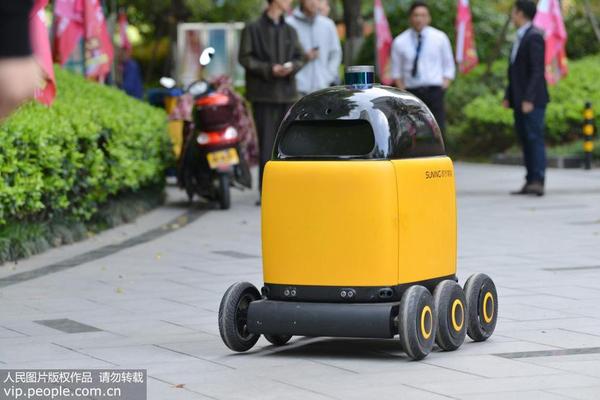Wi-Fi is everywhere -- and as the electromagnetic waves are beamed out from routers to connect our devices to the internet, they also travel through empty space, around corners, and even through walls.
A pair of German researchers have developed a method to harness Wi-Fi signals to capture 3D hologram images of objects around a network, even through solid barriers like doors and walls. The key is recording the shapes made by stray radiation, the electromagnetic waves that bounce off objects as they travel through the air.
The research behind the 3D-imaging method, which started as an undergraduate thesis project before being fleshed out into a larger study, was originally published in the Physical Review of Lettersearlier this month. The technique described in the study was able to provide images as often as 10 times a second and recreate the contents of an entire building in a large-scale simulation.
SEE ALSO:Forget cords. Apple might be planning to charge your future iPhone using Wi-Fi.Using Wi-Fi for imaging isn't a new concept -- but the authors of the paper behind this new breakthrough claim it's the first time the signals have been used to produce 3D hologram recreations of large spaces. The system isn't accurate enough to distinguish many details for now -- but if you're only looking to identify individual shapes or figures within the space, it works.
"If there's a cup of coffee on a table, you may see something is there, but you couldn't see the shape," Philipp Holl, a Technical University of Munich physics student who coauthored the study, told Business Insider. "But you could make out the shape of a person, or a dog on a couch. Really any object that's more than four centimeters in size."
The method uses Wi-Fi signals to essentially scan a room, acting as a low-powered radar rig. Transmitting devices, like our phones and other electronic devices, act as lightbulbs for the imaging system, which depends on two antennae: one scanner tasked with mapping out a 2D plane, and another that records the signal.
Once the antennae collect the image data, the three-dimensional views of objects and emitters are fed into a digital reconstruction algorithm, which creates the hologram map of objects within the space. With more antennae scanning, the system could be faster and more accurate, according to Holl.
While it's still in its infancy, this method brings to mind the massive cellphone signal surveillance machine in The Dark Knight -- you know, the one Bruce Wayne destroys at the end of the film because it's too much of a creepy invasion of privacy for even Batman to use.
The real-world applications the researchers imagine are much better intentioned, like tracking tools and equipment in a factory space, or search and rescue missions to find people trapped in buildings -- but privacy should be a major concern as the system develops.
TopicsCybersecurity
(责任编辑:熱點)
 Donald Trump's tangled web of Russian influence
Donald Trump's tangled web of Russian influence What dating may look like in 2021, according to millions of OkCupid users
What dating may look like in 2021, according to millions of OkCupid users Google Play Store will soon let Android users download gambling apps
Google Play Store will soon let Android users download gambling apps Chadwick Boseman's wife Taylor Simone Ledward gives moving Golden Globes speech
Chadwick Boseman's wife Taylor Simone Ledward gives moving Golden Globes speech Metallica to seek and destroy your eardrums with new album this fall
Metallica to seek and destroy your eardrums with new album this fallNate Parker is finally thinking about the woman who accused him of rape
 Nate Parker is getting a crash course in male privilege after, in his own words, not thinking about
...[详细]
Nate Parker is getting a crash course in male privilege after, in his own words, not thinking about
...[详细] The year is almost done, which feels both impossible and long overdue. 2020 was a strange 12 months,
...[详细]
The year is almost done, which feels both impossible and long overdue. 2020 was a strange 12 months,
...[详细]Facebook saves links shared on Messenger and Instagram, and this new detail reveals it’s on purpose
 UPDATE: Feb. 12, 2021, 10:22 a.m. EST Facebook is refuting the findings of the report detailed below
...[详细]
UPDATE: Feb. 12, 2021, 10:22 a.m. EST Facebook is refuting the findings of the report detailed below
...[详细]Gen Z doesn't own the middle part. No one does.
 It brings me no pleasure to type these words, but center parts are tearing the internet apart.That's
...[详细]
It brings me no pleasure to type these words, but center parts are tearing the internet apart.That's
...[详细]Australian football makes history with first LGBT Pride Game
 The rainbow flag took over Melbourne's Etihad Stadium Saturday night in a powerful statement of acce
...[详细]
The rainbow flag took over Melbourne's Etihad Stadium Saturday night in a powerful statement of acce
...[详细]Dispatches of love and debauchery from the 1918 flu pandemic
 For almost a year now, single people looking for love have had to navigate a — yes, I'm going
...[详细]
For almost a year now, single people looking for love have had to navigate a — yes, I'm going
...[详细]Facebook's Australian news ban extends to weather, and government info
 Australians woke up on Thursday morning to find their news feeds, post history, and favourite news o
...[详细]
Australians woke up on Thursday morning to find their news feeds, post history, and favourite news o
...[详细]One simple tweak to California's car culture could help save the world
 For climate campaigners, California is a conundrum. It has the lowest carbon emissions per household
...[详细]
For climate campaigners, California is a conundrum. It has the lowest carbon emissions per household
...[详细]Man stumbles upon his phone background in real life
 Life imitates tech. Or, perhaps it's the other way around.Reddit user xbshooterwas traveling near Sa
...[详细]
Life imitates tech. Or, perhaps it's the other way around.Reddit user xbshooterwas traveling near Sa
...[详细]11 amazing photos that will erase your insect fears
 On Thursday, the inaugural Luminar Bug Photography Awards announced its winners. The winning images,
...[详细]
On Thursday, the inaugural Luminar Bug Photography Awards announced its winners. The winning images,
...[详细]This German startup wants to be your bank (without being a bank)

Why are we still getting 'jokes' about seizures on TV shows?
